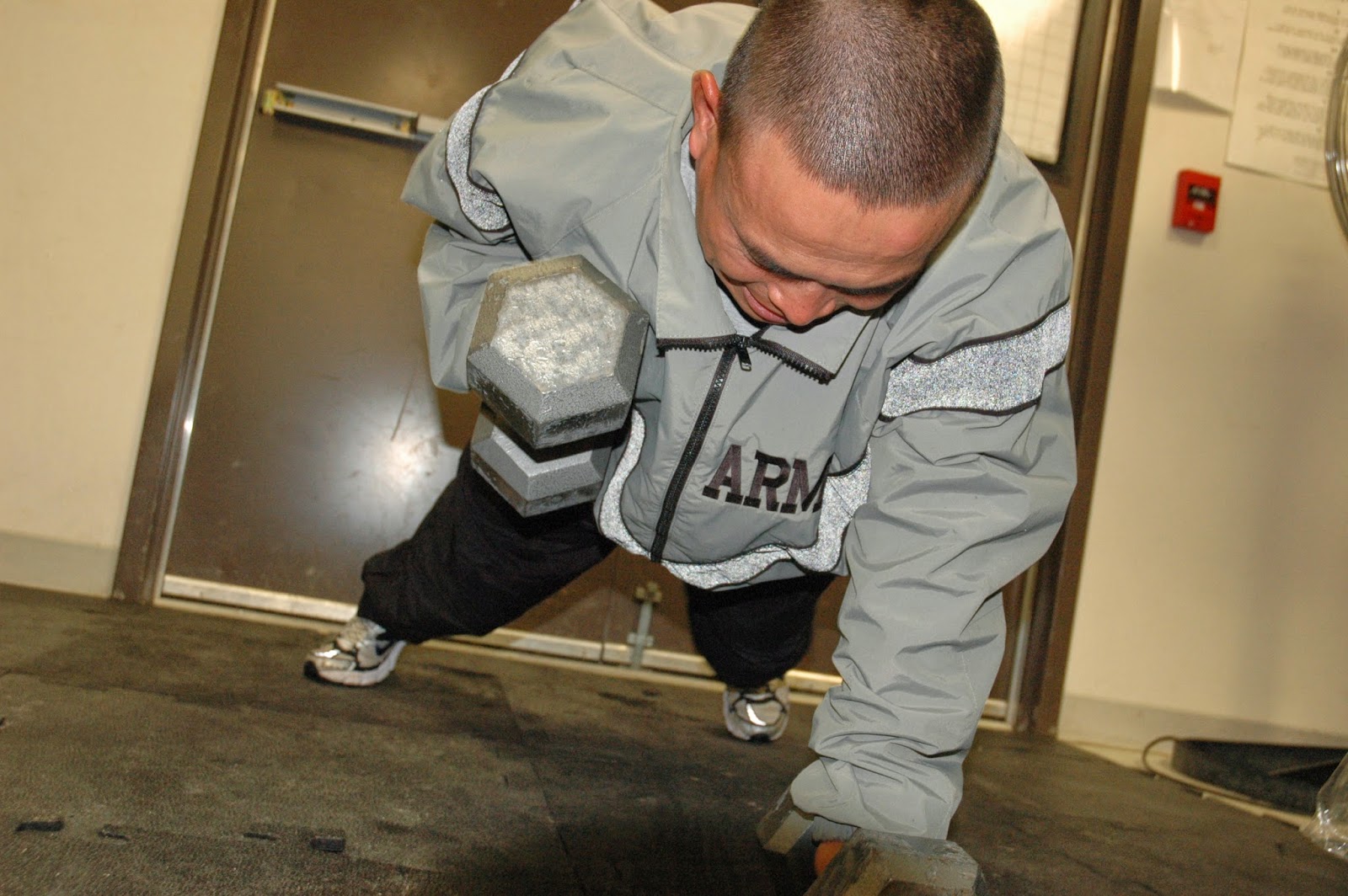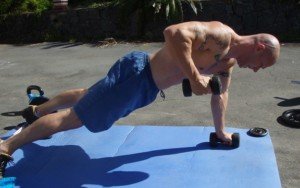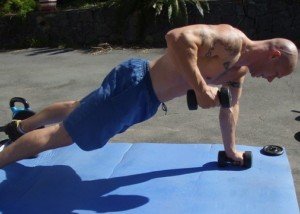
Renegade rows with pushups is one of the best routines for hammering the entire body at once.
I’m a former certified personal trainer and I’ve been doing renegade rows for quite some time.
This exercise is when you insert a pushup in between the rowing action.
What muscles are worked during pushup rows?
The entire upper body. Plus the core and legs.
What more can I say? The pushup portion works the pectoralis (chest) muscles, as well as triceps muscles (back of upper arms) and anterior deltoids (front of shoulders).
Pushups also engage the core (lower back and abdominals), since these muscles must isometrically contract to allow the pushup motion (isometrically means that the muscles do not lengthen or shorten while remaining under tension).
The rowing aspect of the renegade targets the middle back muscles (chiefly the rhomboids), the biceps muscles (front of upper arms), and the forearm muscles.
The plank position that precedes each rowing motion engages the core.

The entire body gets tanked during renegade rows with pushups, especially when a pushup is done after every single row, rather than after both arms do the rows.
There is some leg recruitment as well, but it’s minor.
The legs work to support your body, but no matter how exhausting your set of renegades with pushups is, the legs will not (or at least, should not) feel fatigued when you’re finished.
Benefits of the Renegade Row

This should be obvious. The entire upper body gets nailed during this routine.
Of course, you have to make it challenging. If you’re very strong but use only 15 pound dumbbells, you will be depriving yourself of a much more effective workout.
Here is what I recommend: Figure out what weight dumbbell (or kettlebell) you would have to lift during renegades, with a pushup after every single row (not double), such that 14 to 16 single rows are barely possible – they are very difficult, and after you complete that 14th to 16th lift, your arms’ ability to lift is dead.
However, you still have some pushups left in you. Hands still on dumbbells or kettlebells, you can continue doing just these, anywhere from one more to 10 more before collapsing to the floor.

You immediately stand and are breathing very heavily, heart rate very fast, as though you just sprinted your fastest 100 meters. This is how it should be.
If your pushup ability exceeds your rowing ability, hold the “down” position of every pushup for an extra second or two.
If it’s the other way around, hold the “up” position of every row for a 2-count.
After a routine like this, wait five minutes before going at it again. It should be that strenuous.
If you use dumbbells with rounded ends, the dumbbells will be more difficult to handle, as they will want to roll about.
To minimize this, every time you place the dumbbell back to the floor, place it so that your palm is facing towards your legs.
Otherwise, setting the dumbbell down so that your palm is facing your opposite arm will give the weight a greater propensity to roll outward.
What day should these kinds of renegade rows be performed on? Chest day or back day. How many sets? As many as you feel brutal enough to perform.
Feel free to tweak the routine any way you desire, such as doing two rows in a row on each arm before each pushup.


























